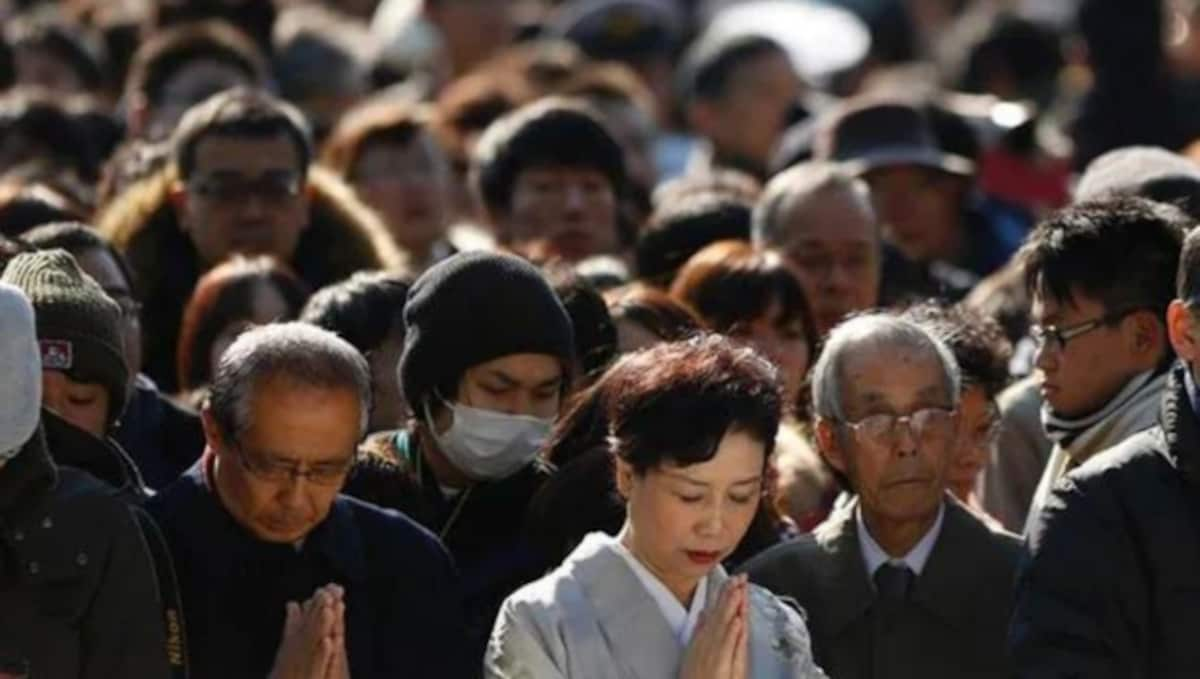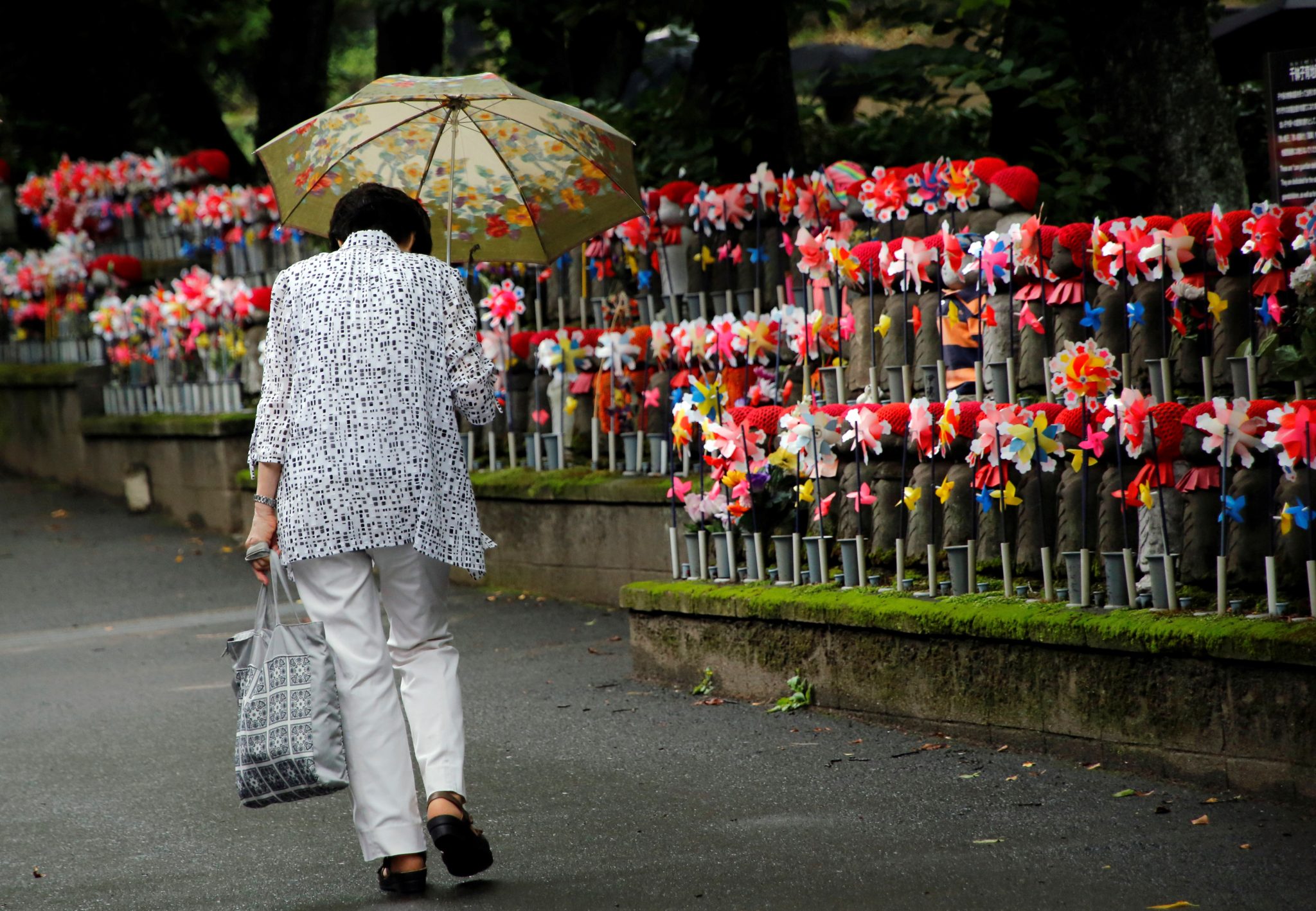Japan Grapples with Aging Population Crisis as One in Ten Residents Crosses the 80-Year Mark

Japan Grapples with Aging Population Crisis as One in Ten Residents Crosses the 80-Year Mark
Japan, often revered for its technological advancements and rich cultural heritage, is facing an unprecedented demographic challenge. As the nation marked Respect for the Aged Day, the Ministry of Internal Affairs and Communications dropped a startling statistic: more than 10% of Japan’s population is now aged 80 or older. This milestone highlights the nation’s rapidly graying demographic landscape, coupled with a record-high proportion of elderly citizens, those aged 65 and above, making up 29.1% of the population, the highest rate globally.
The Land of the Rising Sun, known for its picturesque cherry blossoms and bustling cities, is now grappling with the consequences of an aging populace. In this article, we delve into the implications, causes, and potential solutions for Japan‘s demographic dilemma.
The Graying of Japan: A Multifaceted Crisis
The statistics released on Respect for the Aged Day shed light on a multifaceted crisis that Japan is facing, and its implications are profound. Let’s break down the key aspects:
1. Aging at an Unprecedented Pace
Japan’s demographic transformation is occurring at an unprecedented pace. The fact that one in ten residents is now aged 80 or above underscores the remarkable longevity of its citizens. Improved healthcare, better living conditions, and a strong sense of societal responsibility have contributed to this phenomenon. While longer life expectancy is undoubtedly a positive development, it poses significant challenges for the country’s social and economic fabric.

2. Record-High Proportion of Elderly Citizens
The proportion of elderly citizens, defined as those aged 65 and above, now stands at 29.1% of the population, the highest rate globally. This demographic shift presents an array of challenges, ranging from healthcare and social services to economic stability. With an aging population, the demand for healthcare services, pensions, and elderly care facilities is set to surge, putting immense pressure on government resources.
3. Plunging Birth Rate and Shrinking Workforce
Japan’s declining birth rate is exacerbating the demographic crisis. Younger generations are having fewer children, leading to a shrinking workforce. This phenomenon threatens to undermine the country’s economic growth, as there may not be enough workers to sustain the productivity required for a healthy economy. As the working-age population dwindles, there will be a strain on funding for social programs, including pensions and healthcare.
The Implications of Japan’s Aging Population
Japan’s demographic crisis has far-reaching implications across various sectors of society. Here are some of the critical areas affected:
1. Healthcare and Elderly Care Services
The rapidly aging population places an enormous burden on Japan’s healthcare system. There is a growing need for specialized care for age-related illnesses and conditions, such as dementia and cardiovascular diseases. Additionally, the demand for nursing homes and assisted living facilities is skyrocketing. Ensuring that these services remain accessible and affordable for all citizens is a formidable challenge.
2. Economic Consequences
A shrinking workforce and an aging population pose significant economic challenges. A smaller labor pool means reduced productivity and potentially slower economic growth. It also impacts pension systems, as fewer workers are contributing to support retirees. Japan must find innovative ways to adapt to these economic realities, such as encouraging older workers to stay in the labor force and fostering technological advancements to enhance productivity.

3. Social Isolation and Mental Health
The elderly population in Japan faces an increased risk of social isolation and mental health issues. With changing family dynamics and a smaller working-age population, many elderly individuals may find themselves without a support system. Addressing this issue requires a holistic approach, including community-based initiatives and mental health support services.
4. Government Budget and Fiscal Challenges
As the demand for pensions, healthcare, and elderly care services surges, Japan’s government faces significant fiscal challenges. Balancing the budget while adequately addressing the needs of an aging population is a delicate juggling act. Policymakers must explore sustainable solutions, such as raising the retirement age and implementing measures to encourage childbirth.
The Road Ahead: Potential Solutions
Japan’s demographic challenges are undeniably complex, but the nation is not without options. Here are some potential solutions that policymakers and society at large can consider:
1. Encourage Family Planning and Childbirth
To counter the declining birth rate, the government can implement policies that encourage family planning and support for young parents. This may include financial incentives, improved childcare services, and flexible work arrangements.
2. Promote Active Aging
Encouraging older citizens to remain active in the workforce can mitigate some economic challenges. Policies that promote lifelong learning, retraining, and phased retirement can help older individuals continue to contribute to the economy.
3. Invest in Technology and Automation
Embracing technological advancements and automation can help compensate for the shrinking workforce. Japan has a strong tradition of innovation, and continued investment in robotics and automation could enhance productivity and fill labor gaps.
4. Strengthen Healthcare and Elderly Care Infrastructure
Investing in healthcare infrastructure and expanding access to elderly care services is crucial. This includes building more nursing homes, increasing the number of healthcare professionals, and improving telemedicine capabilities.
5. Foster Social Cohesion
Promoting community engagement and intergenerational activities can combat social isolation among the elderly. Initiatives that bring different age groups together can help create a sense of belonging and support.

Conclusion: Japan’s Demographic Crossroads
Japan finds itself at a demographic crossroads, where the challenges are immense, but the potential for innovative solutions is equally significant. With a proactive approach that involves government policies, societal change, and technological advancements, Japan can navigate its aging population crisis and create a sustainable future for its citizens. The world is watching as this nation, known for its resilience and adaptability, grapples with one of its most pressing challenges yet – the graying of Japan.




